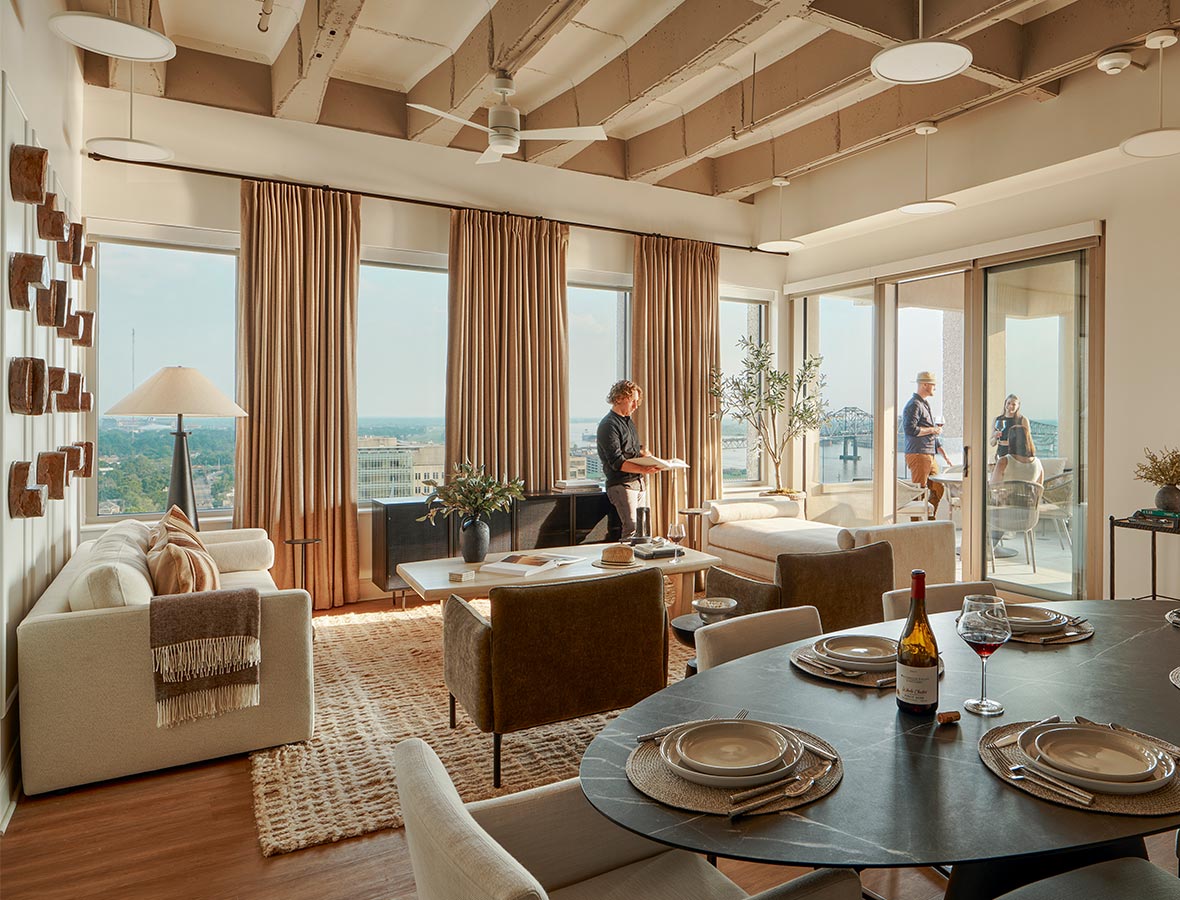The Biggest Challenge to Office Conversions Isn’t Design — It’s the Status Quo
April 01, 2025 | By Steven Paynter
For more than five years, I’ve dedicated my career — and many of my frequent flyer miles — to office-to-residential conversions. Yet, despite my years-long drumbeating about the ability of conversions to unlock affordable housing, lower office vacancy rates, and revitalize our cities, I’m haunted by the market’s persistent inability to innovate beyond the status quo, and the misconceptions — don’t even get me started on plumbing — that continue to stymie the adoption of conversions.
This is a problem, especially as the U.S. is currently in the throes of the worst housing crisis since WWII — which is fitting, considering we require a wartime-like level of collaboration and innovation to save our cities. Against this backdrop, our cities have been cycling through the five stages of grief, and recently, may have finally accepted the fact that the housing crisis isn’t going away, and deliberate action is needed in order to recover.
It's one of the reasons why we’ve joined forces with Brookings Metro, HR&A Advisors, and Eckholm Studios, to study office conversions for the U.S. Department of Housing and Urban Development (HUD) across six cities: Houston, Los Angeles, Pittsburgh, St. Louis, Stamford, and Winston-Salem. By assembling a taskforce capable of examining every angle of the conversion solution — design, policy, finance, and economic — we’ve delivered a 360-degree roadmap for policymakers and developers to navigate the complex process across the U.S.
While a lot has changed since HUD first tasked us to determine how to unlock housing and bring vibrancy back to our cities in February 2024, the fundamentals of the housing market remain the same, and haven’t changed in a positive way since 1971. To address this challenge, our study is based on a combination of market analysis, stakeholder interviews, and architectural feasibility assessments, providing real-world data on which buildings can be converted in each of the six cities, and which policy levers can be pulled to incentivize conversions in each market.
Through this collaboration, we’ve identified the real barriers to conversion — again, it’s not plumbing — like cost gaps, complex approval processes, and underdeveloped subsidies for affordable housing in conversions. Take Los Angeles, which is currently hamstrung by zoning, permitting, and a host of state-related code challenges. For a city dealing with a severe housing shortage, and facing a critical need for affordable housing in particular, overcoming these barriers now — as opposed to three years from now — is paramount.
What’s more, each city faces its own unique challenges. While Los Angeles and Stamford struggle to provide enough housing to meet the regional demand for new units, cities like Pittsburgh and Houston are grappling to maintain fiscal and other benefits associated with aging and underperforming office buildings and districts.

But consistencies do exist. Across our case studies, we found that the primary driver of office conversions is market demand for more housing, as much of the existing activity has occurred in high-demand markets with little to no local incentivization. Likewise, a number of jurisdictions have applied policy and fiscal tools to incentivize conversions in both strong and weak housing markets, like in Pittsburgh, which modified zoning to allow conversions to happen “by-right”, enhanced its tax abatement program, and instituted discretionary public grants to select conversion projects.
In areas with weak demand for downtown living, even a relatively favorable policy and fiscal environment for real estate development failed to spur substantial conversion activity — suggesting some cities may need to make more direct investments if they want to revitalize their urban core. While our analysis will equip cities with the insights needed to address some of these challenges, federal support may also help to overcome the barriers and incentive conversions more quickly.
The long-term survival of our cities depends on their ability to adapt and evolve to changing conditions. Similar to how people come together based on a variety of factors like geography, time, macroeconomic conditions, and culture, our cities are also in a constant state of change. But they’re also at an inflection point. With the right policy environment and financial tools, our cities can inaugurate a period of productive, equitable adaptation, as opposed to the alternative — a substantial decline, requiring decades of recovery. What’s clear from our work the Department of Housing and Urban Development is that in order to progress, we cannot be hamstrung by the status quo. The tools to revitalize are in our hands, and it’s time to get out of our own way.
For media inquiries, email .

